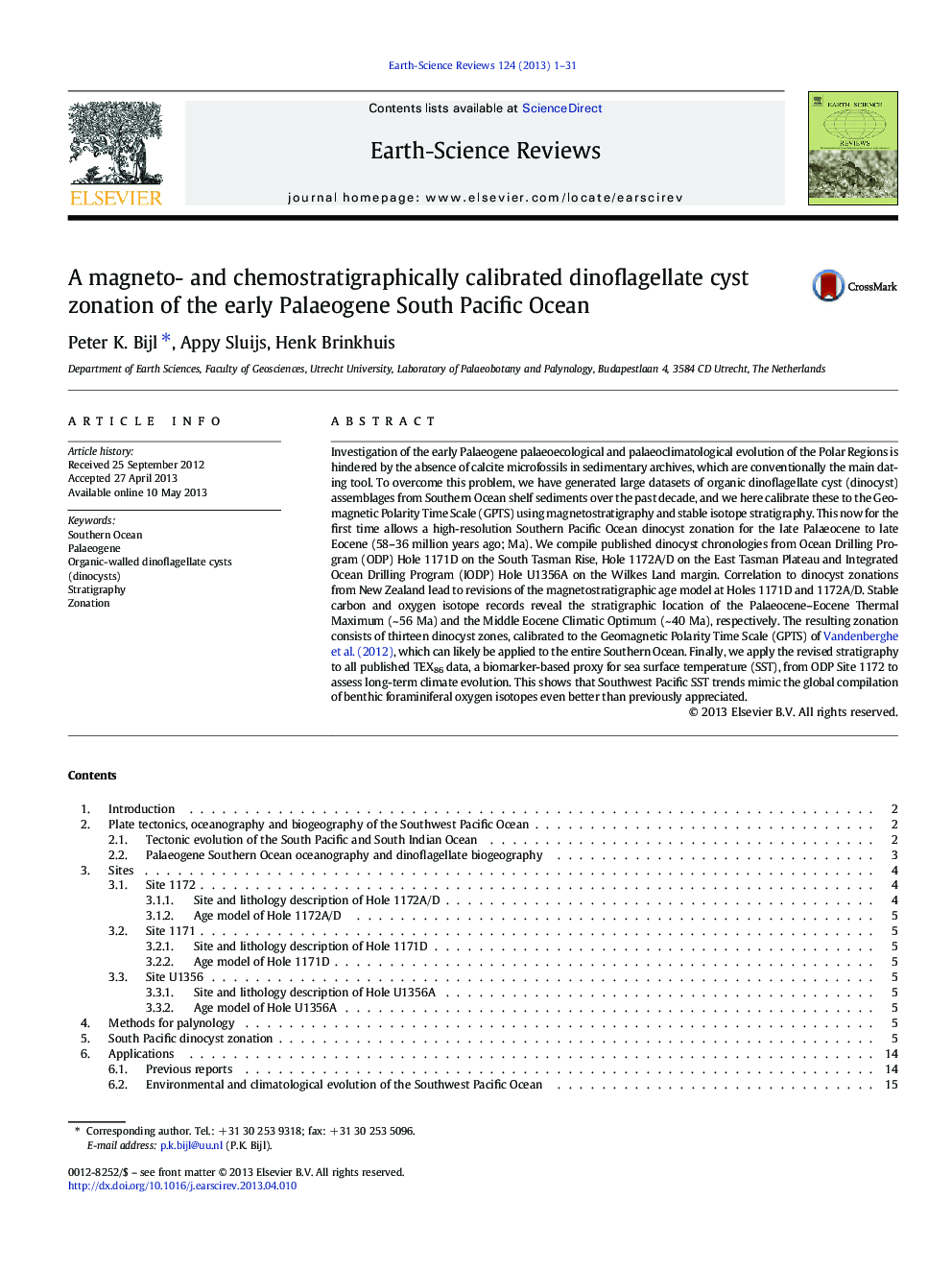| کد مقاله | کد نشریه | سال انتشار | مقاله انگلیسی | نسخه تمام متن |
|---|---|---|---|---|
| 4725846 | 1639978 | 2013 | 31 صفحه PDF | دانلود رایگان |
Investigation of the early Palaeogene palaeoecological and palaeoclimatological evolution of the Polar Regions is hindered by the absence of calcite microfossils in sedimentary archives, which are conventionally the main dating tool. To overcome this problem, we have generated large datasets of organic dinoflagellate cyst (dinocyst) assemblages from Southern Ocean shelf sediments over the past decade, and we here calibrate these to the Geomagnetic Polarity Time Scale (GPTS) using magnetostratigraphy and stable isotope stratigraphy. This now for the first time allows a high-resolution Southern Pacific Ocean dinocyst zonation for the late Palaeocene to late Eocene (58–36 million years ago; Ma). We compile published dinocyst chronologies from Ocean Drilling Program (ODP) Hole 1171D on the South Tasman Rise, Hole 1172A/D on the East Tasman Plateau and Integrated Ocean Drilling Program (IODP) Hole U1356A on the Wilkes Land margin. Correlation to dinocyst zonations from New Zealand lead to revisions of the magnetostratigraphic age model at Holes 1171D and 1172A/D. Stable carbon and oxygen isotope records reveal the stratigraphic location of the Palaeocene–Eocene Thermal Maximum (~ 56 Ma) and the Middle Eocene Climatic Optimum (~ 40 Ma), respectively. The resulting zonation consists of thirteen dinocyst zones, calibrated to the Geomagnetic Polarity Time Scale (GPTS) of Vandenberghe et al. (2012), which can likely be applied to the entire Southern Ocean. Finally, we apply the revised stratigraphy to all published TEX86 data, a biomarker-based proxy for sea surface temperature (SST), from ODP Site 1172 to assess long-term climate evolution. This shows that Southwest Pacific SST trends mimic the global compilation of benthic foraminiferal oxygen isotopes even better than previously appreciated.
Journal: Earth-Science Reviews - Volume 124, September 2013, Pages 1–31
